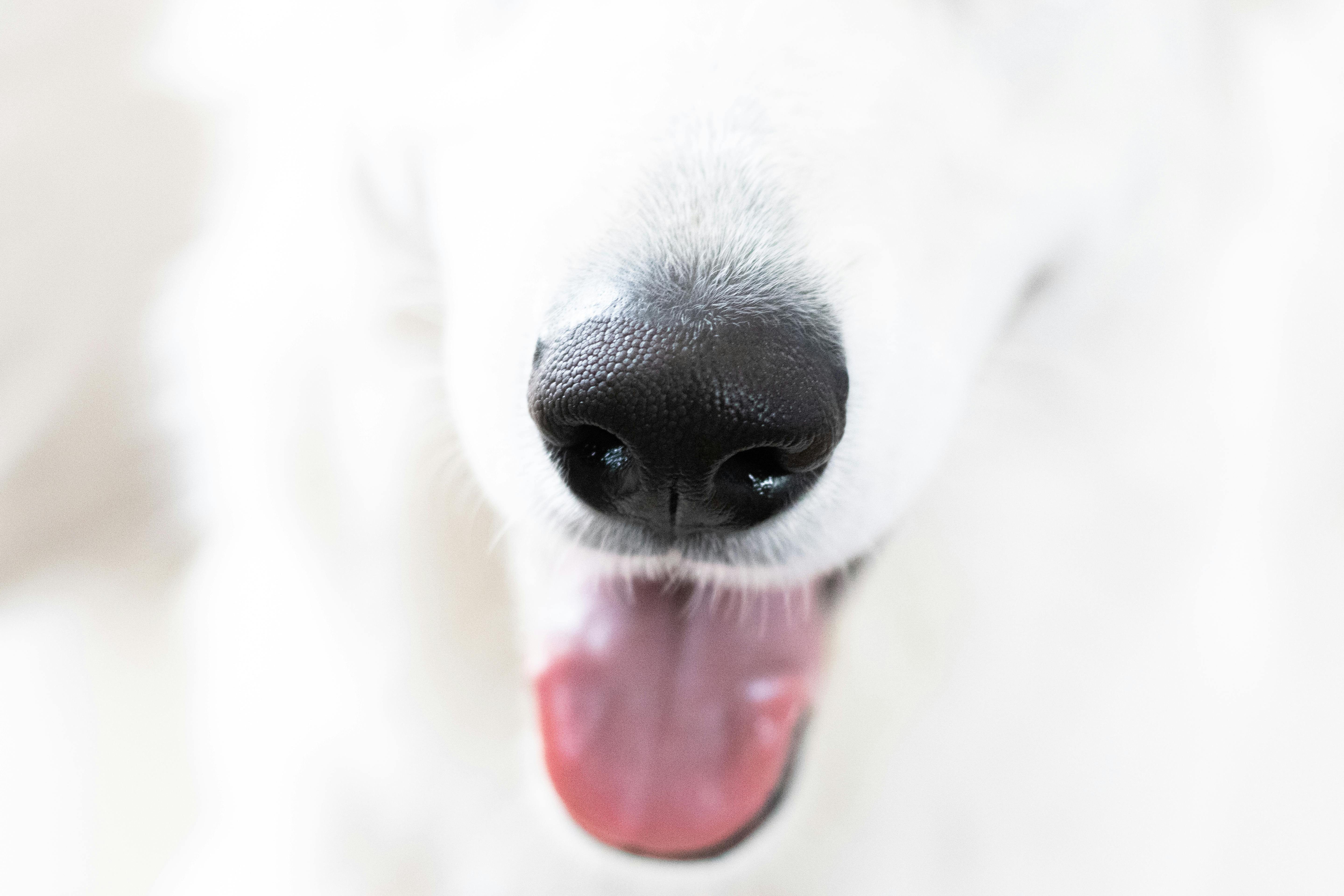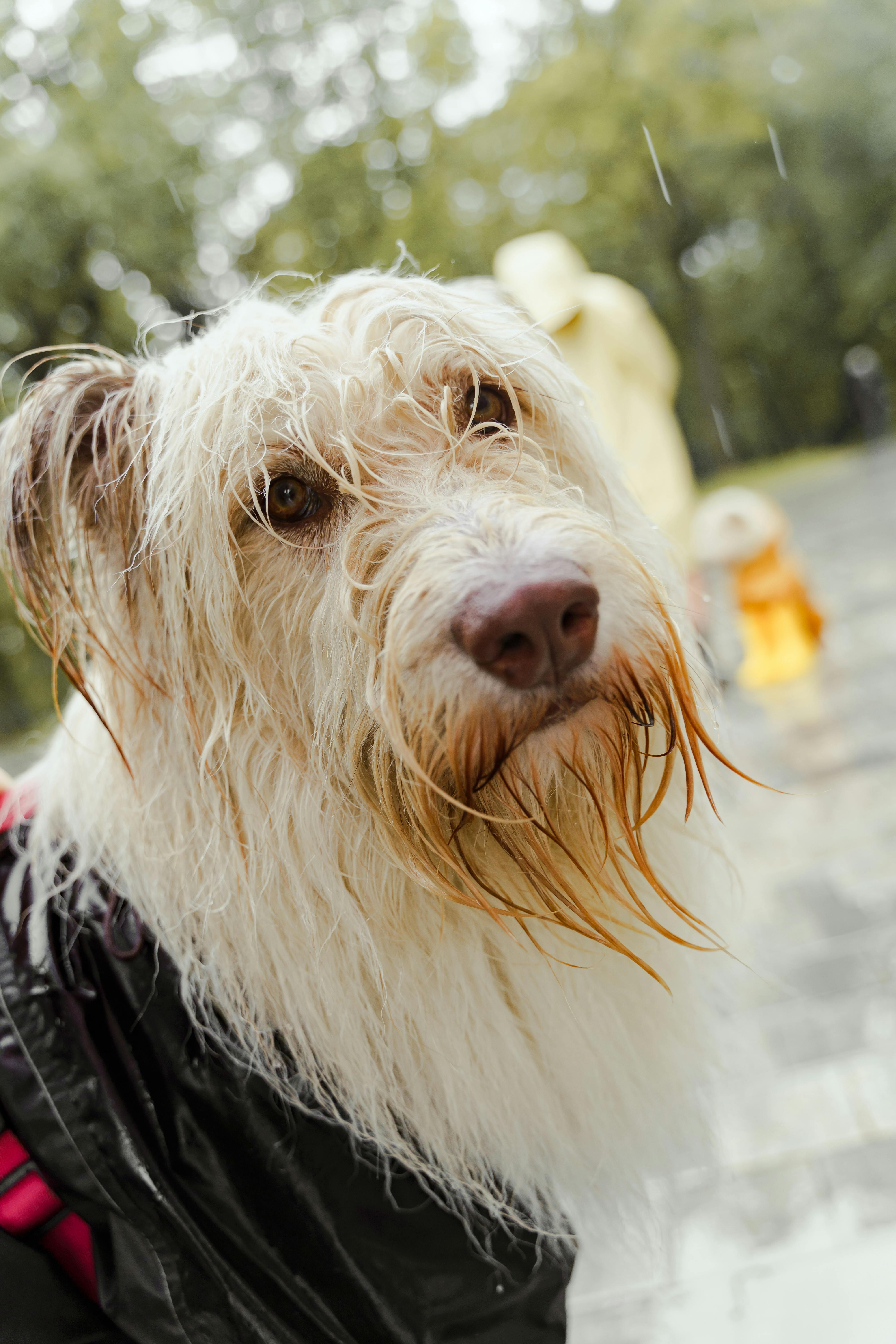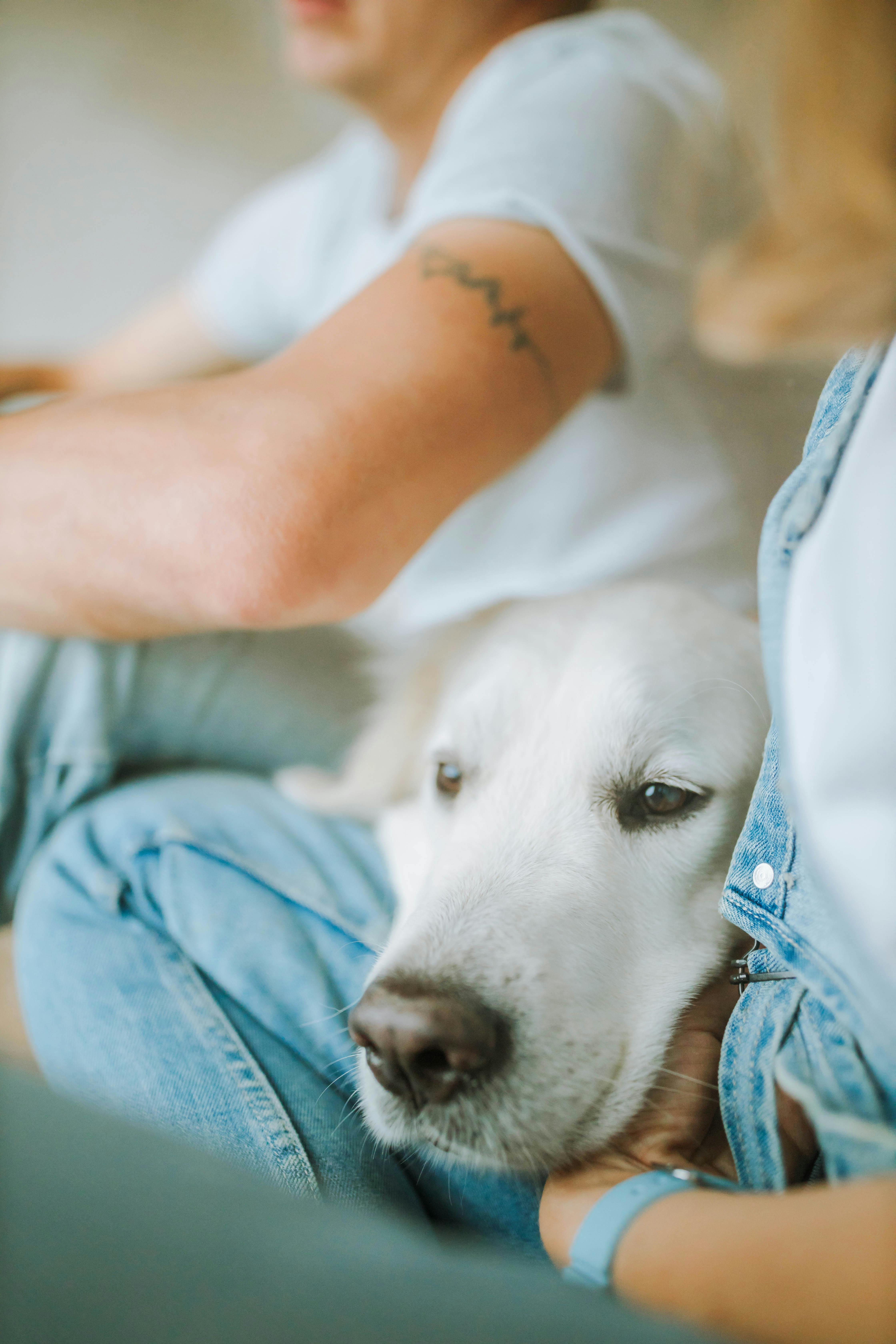Have you ever wonderd why do dogs have wet noses? This intriguing qustion has fascinated dog lovers and animal enthusiasts alike. Dogs’ wet noses are not just an adorable quirk; they serve important purposes! In fact, these moist snouts play a crucial role in a dog’s sense of smell, which is thousands of times more sensitive than that of humans. But what makes a dog’s nose wet in the first place? Is it just a natural characteristic, or does it hold deeper meanings? This is a topic that sparks curiosity and invites further exploration. Understanding why dogs have wet noses can also shed light on their health and well-being. For instance, a dry nose might indicate dehydration or illness, while a cool, moist nose often signals a happy and healthy pup. So, if you’ve ever asked yourself, “Why is my dog’s nose wet?” you’re not alone! Join us as we delve into the fascinating truth behind this unique feature and uncover the science, myths, and fun facts that surround our furry friends’ noses. Prepare to be amazed by what you discover!
The Science Behind Wet Noses: Why Are Dogs’ Noses Always Moist?

Dogs are often known for their wet noses, but have you ever wondered why? This seemingly simple characteristic has deeper roots in canine biology and behavior. The moistness of a dog’s nose is not just a cute feature; it plays significant roles in their health and sensory perception. So, let’s delve into the fascinating science behind why dogs have wet noses.
The Biology of a Dog’s Nose
Dogs’ noses are moist primarily due to a combination of physiological and behavioral factors. The surface of a dog’s nose is covered with a thin layer of mucous, which serves several important purposes:
Enhanced Smell: The moisture helps to capture scent particles from the air, which improves a dog’s ability to smell. Dogs have a sense of smell that is tens of thousands to possibly even 100,000 times more sensitive than humans. This is important for tracking, hunting, and even detecting diseases.
Temperature Regulation: A dog’s nose also helps regulate body temperature. When dogs pant, moisture evaporates from their noses and tongues, helping cool them down, especially in warm weather.
Health Indicator: The moisture level of a dog’s nose can be indicative of their overall health. A dry nose might suggest dehydration or illness, while a wet nose is typically a sign of a healthy, hydrated dog.
Historical Context
Historically, dogs were bred for various purposes, like hunting, herding, and companionship. Their noses evolved to adapt to these roles, enhancing their ability to track scents. For instance, bloodhounds were bred specifically for their impressive olfactory skills, with a nose that is particularly moist to improve scent detection.
Comparison with Other Animals
When you compare dogs to other animals, you might notice that not all animals have wet noses. For example:
Cats: Cats have dry noses most of the time, which doesn’t impair their ability to smell, though they rely on different olfactory structures.
Pigs: Pigs have wet noses similar to dogs, which aids in their foraging behavior, allowing them to detect food better.
Humans: Humans have dry noses, and our sense of smell is significantly less developed than that of dogs. Our noses do not have the same moisture retention or scent capturing capabilities.
Fun Facts About Dog Noses
Uniquely Identifiable: Just like human fingerprints, every dog’s nose print is unique. This could be used to identify dogs in a similar way that we use fingerprints for humans.
Temperature Sensitivity: Dogs’ noses can detect temperature differences, allowing them to sense warmth and coldness in their environment.
Wetness Variation: The wetness of a dog’s nose can vary throughout the day. It may be drier in the morning when they haven’t licked it, or wetter after they’ve been drinking water or playing.
Licking Behavior: Dogs often lick their noses, which helps keep them moist and assists with their sense of smell.
Practical Implications for Dog Owners
Understanding the significance of a dog’s wet nose can be beneficial for owners. Here are some tips to ensure your furry friend stays healthy:
Stay Hydrated: Always provide fresh water to keep your dog hydrated, which in turn keeps their nose moist.
Monitor Nose Condition: Regularly check your dog’s nose. If it’s persistently dry or cracked, consult your veterinarian.
Seasonal Care: In winter, dogs may get dry noses due to cold weather. Consider using nose balms designed for pets to keep their noses moisturized.
The Fascination Continues
The unique wetness of a dog’s nose is a small but vital aspect of what makes dogs such incredible companions. Their noses are not just adorable; they are key to their survival and well-being. Whether it’s the way they greet you at the door or their ability to sniff out a favorite toy, their moist noses play a critical role.
So, next time you see your dog with that familiar wet nose, remember that this feature is a blend of biology, history, and health. It’s a fascinating truth that brings us closer to understanding our canine friends better. Dogs continue to amaze us with their capabilities—wet noses included!
5 Fascinating Facts About Dogs’ Wet Noses That Will Surprise You

Have you ever wondered why dogs have wet noses? You’re not alone! This little quirk of our furry friends has baffled many, and it turns out there’s more to it than just being cute. In this piece, we’re going to dive into five fascinating facts about dogs’ wet noses that might just surprise you. Let’s explore this intriguing topic together!
1. Nature’s Thermometer
Did you know that a dog’s wet nose helps regulate their body temperature? It’s true! Dogs don’t sweat like humans do. Instead, they rely on their noses to cool down. When a dog licks its nose, the moisture evaporates, helping cool their blood vessels. This is especially important during hot days when they need to keep their body temperature in check. Isn’t that interesting?
2. The Sense of Smell Amplifier
Another surprising fact is that the moisture on a dog’s nose enhances their sense of smell. Dogs have an incredible olfactory system — they can smell up to 100,000 times better than humans! A wet nose helps capture scent particles, making it easier for dogs to pick up on smells in their environment. Think of it like a sponge soaking up scents. This is one reason why dogs are often used in search and rescue missions or to detect drugs.
3. Communication Tool
Dogs also use their noses to communicate with each other! When dogs meet, they often sniff each other’s noses and behinds. It is a way of gathering information about each other. A wet nose can signal that a dog is friendly and approachable. When a dog approaches you with a wet nose, it’s not just being cute; it’s also saying, “Hey, I’m friendly! Let’s be friends!”
4. Health Indicators
A wet nose can also be an indicator of a dog’s health. Generally, a healthy dog has a moist nose, while a dry or warm nose might suggest they’re not feeling well. However, this isn’t a foolproof method. Some factors like the weather or activity level can affect the moisture of a dog’s nose. Here are some signs to look for:
- Normal: Cool and moist
- Slightly dry: Could be due to heat or exercise
- Very dry: Might indicate dehydration or illness
- Warm and dry: Can suggest a fever or health issue
If you’re ever unsure about your dog’s health, it’s always best to consult with a veterinarian.
5. Wet Noses and the Law of Attraction
Believe it or not, research suggests that having a wet nose may make dogs more appealing to humans. Studies show that people are often drawn to dogs with wet noses over those that are dry. The moisture gives an impression of vitality and health, making them seem more attractive. This could explain why so many people feel an instant connection with their wet-nosed companions.
Fun Facts in a Nutshell
Here’s a quick list of the fascinating facts we discussed:
- Thermoregulation: Wet noses help dogs cool down.
- Enhanced Smell: Moisture aids in capturing scent particles.
- Communication: Dogs use wet noses to greet and interact.
- Health Indicators: Nose moisture can indicate health status.
- Attractiveness: Wet-nosed dogs may be perceived as healthier and more appealing.
Why is this Important?
Understanding why dogs have wet noses can deepen your appreciation for these animals. You might have noticed that many dogs seem to have an innate ability to connect with humans. Their wet noses are more than just a cute feature; they play key roles in how dogs interact with their environment and with us. Being aware of these fascinating facts may even help you take better care of your furry friend!
So, next time you pet your dog and feel that cool, wet nose, remember that it serves multiple purposes. From helping them stay cool to enhancing their sense of smell, a dog’s wet nose is a remarkable feature that contributes to their overall health and behavior. Embrace the quirks of our beloved pets, and who knows what other surprises they might reveal!
How a Dog’s Wet Nose Enhances Their Sense of Smell: The Hidden Benefits

Dogs are some of the most beloved pets around the world, and their wet noses are often a topic of curiosity among pet owners and animal lovers alike. But have you ever wondered, why do dogs have wet noses? The answer is more fascinating than you might think. It’s not just a quirky characteristic; their wet noses actually serves multiple important functions that enhance their abilities as incredible companions.
The Science Behind a Dog’s Wet Nose
A dog’s nose is covered with a special type of skin that is moist and cool. This moisture is not just for show or some random trait. Scientifically, the wetness helps to enhance their sense of smell. When dogs sniff, the moisture on their nose captures scent particles from the air. This makes it easier for them to detect smells, which in turn helps them understand their environment.
- Dogs have up to 300 million smell receptors in their noses, compared to about 6 million in humans.
- The area of a dog’s brain that processes smells is about 40 times larger than that of a human.
- Wet noses help in trapping scent particles better than dry noses.
This unique nose structure allows dogs to be effective in various roles, from search and rescue to being a companion for those with disabilities.
Evolutionary Benefits and Historical Context
Historically, dogs have been domesticated for thousands of years, and their olfactory abilities have been crucial to their survival and usefulness. In ancient times, dogs were used for hunting, herding, and guarding. Their ability to smell was essential in tracking game, finding food, and even locating lost individuals. The wet nose is a trait that has been fine-tuned through generations of evolution.
- Ancient civilizations like the Egyptians held dogs in high regard partly because of their acute sense of smell.
- In the Middle Ages, dogs were used for tracking criminals and locating substances like drugs or explosives.
- Today, dogs are trained to detect diseases such as cancer or diabetes through scent alone.
The Hidden Benefits of a Wet Nose
So, why do dogs have wet noses? Beyond just enhancing their sense of smell, there are other benefits that might surprise you.
Temperature Regulation: A wet nose helps dogs cool down. Just like how humans sweat to regulate body temperature, dogs can lose heat through their noses.
Health Indicators: The moisture level of a dog’s nose can indicate its health. A dry nose could signify dehydration or illness, while a wet nose is often a sign of a healthy dog.
Social Interaction: Dogs use their noses to communicate. A wet nose can mean a dog is friendly and approachable. When dogs greet each other or humans, they often touch noses, which is a way of gathering scent information.
Sense of Taste: A wet nose can also enhance a dog’s sense of taste. When they lick something, the moisture helps to absorb flavor particles, giving them a better taste experience.
Interesting Facts About Dog Noses
- Dogs can identify scents at concentrations as low as one part per trillion.
- The shape of a dog’s nose can influence its sense of smell. Breeds like Bloodhounds have long, droopy noses that help trap scent particles better.
- Dogs have different types of smell receptors that can detect various odors, including pheromones, which are important for communication.
Comparison of Dog Noses to Human Noses
| Feature | Dog Nose | Human Nose |
|---|---|---|
| Smell Receptors | Up to 300 million | About 6 million |
| Brain Processing Area | 40 times larger for smell | Smaller area for smell |
| Moisture Level | Typically wet | Usually dry |
| Scent Detection | Can detect scents in parts per trillion | Less sensitive to scents |
Practical Applications of a Dog’s Sense of Smell
Many people don’t realize how dogs’ noses are utilized in everyday life. Here are a few practical applications:
- Search and Rescue: Dogs are trained to locate missing persons in disaster situations.
- Medical Detection: Certain breeds are being trained to detect diseases like cancer or diabetes.
- Law Enforcement: Dogs help in detecting drugs, explosives, and even tracking down criminals.
Understanding why do dogs have wet noses not only enlightens us about our furry friends but also enhances our appreciation for how they interact with the world. Their wet noses are more than just a cute feature; they are a vital part of how dogs perceive their surroundings and communicate with us. Recognizing these traits can deepen the bond between you and your pet, making your relationship that much more special.
Wet Noses and Health: What Your Dog’s Nose Can Reveal About Their Wellbeing

When you think about dogs, one of the first things that comes to mind is probably their wet noses. It’s like, they’re synonymous with being a dog, right? But have you ever stopped and wonder why do dogs have wet noses? Or what your furry friend’s nose can tell you about their overall health? Let’s dive into this fascinating subject and uncover the intriguing truths behind those wet noses and what they means for your dog’s wellbeing.
Why Do Dogs Have Wet Noses?
Dogs’ noses are wet for several reasons. First off, it’s all about their sense of smell. A dog’s nose is designed to absorb scent particles. When their noses are moist, it help them to capture more odors, making their sense of smell even sharper. Studies shows that dogs have up to 300 million scent receptors in their noses, compared to about six million in humans. So, wet noses are like nature’s little tool for enhancing their olfactory abilities.
- Moisture Helps with Scent Detection: The wetness on their noses helps to trap scent particles, enhancing their ability to detect different odors.
- Cooling Mechanism: Dogs don’t sweat like humans do. Their noses also plays a role in thermoregulation. When they get hot, the moisture on their noses can help to cool them down.
- Body Temperature Regulation: A wet nose can also indicate a healthy body temperature. If a dog’s nose is dry, it could signal that they’re dehydrated or unwell.
The Connection Between Wet Noses and Health
Your dog’s nose can reveal a lot about their health status. Observing changes in its condition could be crucial for identifying potential health problems. Here’s what to look for:
- Normal Wetness: A healthy dog typically has a moist and cool nose. This is a good sign that they’re well-hydrated and healthy.
- Dry and Cracked Nose: A dry, cracked nose can indicate dehydration or even certain illnesses. It’s one of the first signs to look out for.
- Excessively Wet Nose: If your dog’s nose is excessively wet, it might indicate a respiratory infection or sinus issues.
- Discoloration: Changes in color, like a pink or red nose, can suggest an allergic reaction or even sunburn.
Historical Context of Dog Noses
Understanding why dogs have wet noses can also be looked through history. In ancient times, dogs were primarily used for hunting and herding. Their excellent sense of smell made them valuable partners. Wet noses weren’t just a quirky feature; they were essential for survival and the jobs they performed. As dogs evolved alongside humans, their wet noses became more than just a tool; they became part of the charm that makes them beloved pets today.
Fun Facts About Dog Noses
Here are some interesting tidbits about dog noses that you might not have known:
- Unique Patterns: Just like human fingerprints, every dog’s nose print is unique. It can actually be used to identify them!
- Scent Memory: Dogs can remember scents for years. They associate certain smells with experiences, making their noses a powerful tool for memory.
- Temperature Sensitivity: Dogs can sense temperature changes through their noses, which helps them detect approaching storms or changes in the weather.
Practical Tips for Maintaining Your Dog’s Nose
Taking care of your dog’s nose is important. Here’s how you can help keep it healthy:
- Hydration: Always make sure your dog has access to fresh water. Dehydration can lead to a dry nose.
- Moisturizing: In dry climates, consider using dog-safe moisturizers to prevent cracking.
- Regular Vet Check-ups: Keep an eye on any changes and consult your veterinarian if you notice anything unusual.
Comparing Dog Noses to Human Noses
Here’s a quick comparison of dog noses versus human noses:
| Feature | Dog Nose | Human Nose |
|---|---|---|
| Sense of Smell | Highly developed, 300 million receptors | Limited, about 6 million receptors |
| Temperature Regulation | Helps cool the body | Sweating is primary method |
| Moisture Level | Typically wet for better scent detection | Generally dry |
Dogs’ wet noses are not just adorable; they play a vital role in their health and wellbeing. Understanding what your dog’s nose can tell you can help you be a better pet owner. So next time you pet your furry friend, take a moment to appreciate that wet nose and all the fascinating things it signifies. It’s a window into their health and happiness. Pay attention to those little signs because they could mean a lot in the long run!
The Role of a Dog’s Wet Nose in Communication: Understanding Canine Behavior

Dogs are often called man’s best friend, and their unique ways of communication help to build the bond between humans and canines. One of the most fascinating aspects of dog behavior is their wet noses. Have you ever wondered, “Why do dogs have wet noses?” Well, it’s a question that many pet owners ponder, and the answer is as intriguing as it is informative.
The Science Behind a Dog’s Wet Nose
Dog’s noses are wet for several reasons, and understanding these reasons can enhance your knowledge of canine behavior. Here are some key points to consider:
Temperature Regulation: Dogs don’t sweat like humans do. Instead, they cool off primarily through panting. A wet nose helps with this process by allowing moisture to evaporate, which cools the dog down.
Enhanced Smell: Dogs have an extraordinary sense of smell, estimated to be anywhere from 10,000 to 100,000 times more sensitive than humans. The moisture on a dog’s nose helps to trap scent particles, making it easier for them to detect smells in their environment.
Health Indicator: A dog’s nose can also be an indicator of their health. A cold, wet nose is often seen as a sign of a healthy dog, while a dry or warm nose may indicate illness. However, this isn’t a foolproof method and should not replace regular vet check-ups.
Historical Context
Throughout history, dogs have served various roles in human society, from hunting companions to service animals. The wet nose is part of what makes them such effective communicators. Ancient civilizations recognized the importance of a dog’s sense of smell, leading to their domestication and specialization in roles where scent detection was vital.
Why Do Dogs Have Wet Noses?
To delve deeper into the reasons behind this phenomenon, we can explore several aspects:
Physiological Reasons:
- A dog’s nose has a special structure that produces mucus, which keeps it moist.
- This moisture aids in the olfactory process, enhancing their ability to perceive scents.
Behavioral Aspects:
- Dogs often lick their noses. This behavior keeps the nose moist and allows them to taste the air, which can provide them with more information about their surroundings.
- Wet noses are often used during social interactions. When a dog nudges you with their nose, they are often seeking attention or affection.
Environmental Factors:
- Weather conditions can affect a dog’s nose. For instance, humidity can increase moisture levels, while dry conditions might lead to a drier nose.
Fun Facts About Dog Noses
- Dogs have unique nose prints, similar to human fingerprints, which can be used for identification.
- The color of a dog’s nose can vary widely among breeds, and some dogs even have spotted noses.
- Puppies are born with pink noses that may darken as they grow older.
Comparing Dog and Human Noses
Here’s a simple table comparing the noses of dogs and humans:
| Feature | Dogs | Humans |
|---|---|---|
| Number of Olfactory Receptors | Approx. 300 million | Approx. 5 million |
| Moisture Level | High | Low |
| Functionality | Scent detection, cooling | Scent detection |
| Health Indicator | Can signal illness | Not a health indicator |
Practical Examples of Nose Communication
Dogs communicate a lot through their noses. Here’s how:
- Greeting: When a dog meets another dog, they often sniff each other’s noses to gather information about each other.
- Affection: A gentle nudge with a wet nose can signify affection or a desire for attention from their human counterparts.
- Curiosity: If a dog is sniffing around, they are often exploring their environment or seeking out something intriguing.
Understanding the role of a dog’s wet nose in communication can greatly enhance the bond you share with your furry friend. It’s not just a quirky trait; it serves essential functions that impact their health and behavior. Observing how your dog uses their nose can provide insight into their emotions and needs.
So next time you see your dog with their wet nose, remember, there’s a lot more going on than meets the eye. Their nose isn’t just wet; it’s a crucial tool for interaction, exploration, and understanding the world around them. Embrace the quirks of your canine companion, and appreciate the fascinating truth about why they have wet noses!
Why Do Dogs Have Wet Noses? Exploring Evolutionary Reasons and Instincts

Dogs are wonderful companions, they bring joy to our lives in countless ways. One of their most endearing features is their wet noses. You’ve probably noticed that your furry friend’s nose is often cool and moist. But have you ever wondered why do dogs have wet noses? Let’s take a closer look at the evolutionary reasons and instincts behind this fascinating trait.
The Science Behind a Wet Nose
Firstly, a dog’s wet nose serve several important purposes. The moisture on their noses is not just for show; it actually helps them smell better. Dogs have an incredible sense of smell, estimated to be anywhere from 10,000 to 100,000 times more sensitive than humans. With that in mind, here’s how the wetness assists them:
- Enhanced Smell: The moisture helps to capture scent particles from the air. This allows dogs to detect scents more effectively.
- Temperature Regulation: Just like humans sweat to cool down, a dog’s nose can help regulate its body temperature.
- Communication: Dogs often use their noses to greet other dogs, and a wet nose can signify friendliness.
Evolutionary Background
If we look back into the history of dogs, it’s clear that their ancestors also had wet noses. Early canines relied heavily on their sense of smell for survival, hunting and finding food. Over time, this trait became prominent and remained through domestication.
- Ancient Lineage: Wolves, which are the ancestors of modern dogs, also had wet noses. This trait was beneficial for their hunting and social interactions.
- Adaptation: As dogs evolved, the wet nose became an adaptation that helped them thrive in their environments, whether wild or domestic.
Why Do Dogs Have Wet Noses? Here’s Some Common Theories
There are several theories about why dogs have wet noses, some of which are quite interesting.
- Hygiene: Wet noses can help trap dirt and bacteria, making it easier for dogs to keep their noses clean.
- Scent Detection: The moisture on the nose enhances the olfactory receptors, giving them a better ability to analyze scents.
- Heat Regulation: Dogs don’t sweat like humans do, so a wet nose can help them cool off.
The Role of Instincts
Instinct plays a big part in why dogs have wet noses. From a young age, puppies learn to use their noses for various activities:
- Exploration: Puppies use their noses to explore the world around them. The wetness helps them navigate their environment.
- Social Interaction: Dogs greet each other with their noses, and a wet nose can be seen as an invitation to engage.
- Searching for Food: Instinctively, dogs use their noses to locate food. The wetness assists them in tracking down scents.
Comparison of Wet Nose vs. Dry Nose
It’s also worth noting that not all dogs have the same nose condition at all times. Some dogs may have a dry nose occasionally. Here’s a quick comparison:
| Feature | Wet Nose | Dry Nose |
|---|---|---|
| Temperature | Cool | Warmer |
| Scent Detection | Enhanced | Reduced effectiveness |
| Health Indicator | Generally healthy | May signal dehydration or illness |
| Moisture Level | High | Low |
Practical Examples of Nose Conditions
Understanding the condition of a dog’s nose can give insights into its health. Here’s what to look out for:
- Consistently Wet Nose: Indicates hydration and good health.
- Dry, Cracked Nose: Could signal dehydration, allergies, or illness.
- Excessively Wet Nose: Might indicate fever or a respiratory issue.
Conclusion
So, why do dogs have wet noses? It’s a combination of evolutionary traits and instinctual behaviors that enhance their lives. Their wet noses serve vital roles in communication, scent detection, and temperature regulation. Next time you give your dog a pat, appreciate that cool, moist nose! It’s not just a cute feature; it’s a window into their evolutionary past and a key to their survival in our world.
From Temperature Regulation to Scent Detection: The Multifunctional Purpose of Wet Noses

Have you ever wondered why dogs have wet noses? It’s a curious feature, right? Many people think it’s just a cute characteristic of our furry friends, but there’s so much more behind those moist snouts. From temperature regulation to scent detection, the wet nose of a dog serves multiple purposes that are essential to their well-being and survival. Let’s dive into the fascinating truth about why dogs have wet noses.
The Science Behind Wet Noses
Dog noses are not just wet for no reason. The moisture on a dog’s nose helps enhance its sense of smell. Dogs have an extraordinary olfactory system, and studies show that they can smell up to 100,000 times better than humans. The wetness on their noses helps trap scent particles, making it easier for dogs to detect and identify smells. This is crucial for their survival instincts, as dogs rely heavily on their sense of smell to understand their environment.
Temperature Regulation
Another important function of a wet nose is temperature regulation. Dogs don’t sweat like humans do. Instead, they have sweat glands primarily located in their paw pads. A wet nose helps to cool them down. When a dog breathes, the moisture evaporates from the surface of their nose, which helps to lower their body temperature. This is especially important on hot days or during vigorous activities.
The Role of Scent Detection
A study conducted by the University of California, Davis, reveals that dogs can detect certain diseases in humans, such as cancer and diabetes, through their sense of smell. The wetness on their noses plays a pivotal role in this ability. Here’s how it works:
- Scent Absorption: The moisture helps to absorb scent particles from the air.
- Enhanced Sensitivity: A wet nose increases the sensitivity of the olfactory receptors, allowing dogs to pick up even the faintest of odors.
- Environmental Awareness: This ability not only helps in hunting but also in identifying potential dangers or other animals in their vicinity.
Historical Context of Dog Noses
Dogs have been companions to humans for thousands of years. Their noses have evolved alongside them for various reasons. In ancient times, dogs were used for hunting and herding, and a keen sense of smell was essential. This evolution has led to the multifunctional purpose of their wet noses.
- Hunting: Early breeds were developed for specific tasks, such as tracking and hunting. The wet nose facilitated better scent detection, leading to more successful hunts.
- Companionship: Over time, as dogs transitioned from working animals to companions, their sense of smell remained a crucial aspect of their behavior and interaction with humans.
Interesting Facts About Dog Noses
- Unique Patterns: Just like human fingerprints, every dog has a unique nose print. This could potentially be used for identification purposes.
- Nose Temperature: A dog’s nose is usually cooler than the rest of its body. A warm, dry nose can sometimes indicate illness, but it’s not a definitive sign.
- Scent Memory: Dogs have an incredible scent memory, which allows them to recall and recognize scents they have encountered before.
Comparison: Dog Noses vs. Human Noses
| Feature | Dog Noses | Human Noses |
|---|---|---|
| Sense of Smell | 100,000 times more sensitive | Less sensitive |
| Nose Moisture | Essential for scent detection | Mostly dry |
| Functionality | Temperature regulation, scent detection | Primarily breathing and filtering air |
| Unique Patterns | Unique nose prints | No unique identification |
Practical Examples of Wet Nose Benefits
- Search and Rescue: Dogs with wet noses are often employed in search and rescue missions because of their ability to detect scents over long distances.
- Medical Detection: Certain dogs are trained to detect medical conditions like low blood sugar in diabetics, thanks to their sensitive noses.
- Behavioral Understanding: A dog’s wet nose can reflect its emotional state. A dog may nuzzle you with its wet nose as a form of affection or to seek attention.
The wet nose of a dog isn’t just an adorable feature; it’s a multifunctional tool that plays a vital role in their everyday life. From helping them regulate their temperature to enhancing their remarkable sense of smell, these moist noses are integral to their health and behavior. Understanding why dogs have wet noses adds another layer of appreciation for our furry companions and the unique traits that make them so special. Next time you see a dog with a wet nose, remember the fascinating truth behind it!
Common Myths Debunked: Do Dogs’ Wet Noses Really Indicate a Fever?

When many people see a dog with a wet nose, they might think something is wrong, like it might have a fever or some kind of illness. But is that true? There are lots of myths about why dogs have wet noses, and some of them are totally wrong. In this article, we gonna explore the common myths about dog noses and uncover the fascinating truth behind that wet, cold snout of your furry friend.
Do Dogs’ Wet Noses Indicate a Fever?
One popular belief is that if a dog’s nose is wet, it means they are healthy, and if it’s dry, it hints at a fever. But hold on! This is not quite right. The moisture on a dog’s nose can be influenced by many factors, and it doesn’t necessarily indicate their health condition. Here are some points to consider:
- Normal Variation: A dog’s nose can be wet for many reasons unrelated to health. Weather, humidity, and even the dog’s activity level can cause changes in moisture.
- Temperature Regulation: Dogs often lick their noses to help them cool down. A wet nose can be a sign that they are trying to regulate their body temperature.
- Health Check: While a dry nose can sometimes indicate dehydration or illness, it’s not a definitive sign of a fever. Always consult a vet for proper diagnosis.
Why Do Dogs Have Wet Noses?
So, if a dog’s wet nose doesn’t mean they are sick, then why do they have them? Wet noses serve several vital purposes that are quite fascinating. Here are some reasons why dogs have wet noses:
- Sense of Smell: A wet nose helps enhance a dog’s sense of smell. The moisture captures scent particles, making it easier for them to detect smells. Dogs have an incredible sense of smell, and their wet noses play a crucial role in this ability.
- Cooling Mechanism: Dogs don’t sweat like humans do. Instead, they release heat through their noses and paw pads. A wet nose helps to keep them cool.
- Communication Tool: Dogs use their noses to explore and communicate with other dogs. A wet nose can convey different messages, such as friendliness or curiosity.
Common Myths About Dogs’ Wet Noses
Now that we know why dogs have wet noses, let’s debunk some common myths surrounding them.
Myth: A wet nose means a dog is healthy.
- Truth: A wet nose can be normal, but it doesn’t always mean the dog is healthy. It can also be influenced by environmental factors.
Myth: A dry nose indicates illness.
- Truth: A dry nose doesn’t automatically mean a dog is sick. Just like with humans, dogs can have dry skin or noses for various reasons.
Myth: All dogs have wet noses.
- Truth: Some breeds are more prone to having drier noses than others. For example, certain brachycephalic breeds (like Bulldogs) may have less moisture.
Myth: Dogs can’t get sick if they have a wet nose.
- Truth: Dogs can get sick regardless of their nose’s wetness. It’s important to monitor other signs of illness too, like appetite and energy levels.
The Science Behind the Wet Nose
The science behind why dogs have wet noses is quite interesting. The moisture on a dog’s nose serves several purposes:
- Mucus Production: Special glands in the nose produce mucus, which helps to keep the nose moist.
- Scent Detection: The moisture helps to dissolve scent particles, making it easier for dogs to detect different smells.
- Environmental Response: Dogs often lick their noses, which can add moisture and help them gather more scent information.
Quick Tips for Dog Owners
If you’re a dog owner, here are some tips regarding your furry friend’s nose:
- Check Regularly: Always keep an eye on your dog’s nose. If you notice any drastic changes, like persistent dryness or cracking, consult a veterinarian.
- Hydration Matters: Ensure your dog stays hydrated, as dehydration can lead to a dry nose.
- Maintain Cleanliness: Sometimes dirt can accumulate on the nose. Gently wipe your dog’s nose with a damp cloth to keep it clean.
In summary, the wetness of a dog’s nose is not a straightforward indicator of their health. There are many reasons for a wet nose, including smell enhancement, temperature regulation, and communication. It’s essential for dog owners to understand these nuances and not jump to conclusions based solely on their pet’s nose condition. Always consult with a veterinarian if you have concerns about your dog’s health.
How to Keep Your Dog’s Nose Healthy: Tips for Pet Owners

As a dog owner, you probably notice how your furry friend’s nose is often wet and cool to the touch. But have you ever wonder why dogs have wet noses? This common feature is not just cute; it serves several important functions for your pet’s health and well-being. In this post, we will explore the fascinating truth of why dog noses are wet, and provide tips on how to keep your dog’s nose healthy.
Why Do Dogs Have Wet Noses?
Dogs have wet noses for several reasons, and understanding these can help you care better for your pet. Here’s some key points to consider:
- Enhanced Smell: A wet nose helps dogs absorb scent chemicals in the air. The moisture increases the surface area, allowing them to pick up more smells. That’s why dogs are often sniffing everything around them!
- Temperature Regulation: Just like humans sweat to cool off, dogs can regulate their body temperature through their noses. A wet nose helps keep them cool, especially after a long play session.
- Health Indicator: The condition of a dog’s nose can indicate its health. A dry or cracked nose may suggest dehydration or illness, while a healthy nose is usually moist and clean.
The Anatomy of a Dog’s Nose
A dog’s nose is a complex organ, and here’s how it works:
- Nasal Passages: Dogs have long nasal passages filled with olfactory receptors. These receptors help them identify different smells.
- Mucus Layer: The wetness on a dog’s nose comes from a thin layer of mucus. This mucus is produced by glands in the nose and can help capture scent molecules.
- Blood Vessels: The nose is also rich in blood vessels, which helps maintain moisture and temperature.
Keeping Your Dog’s Nose Healthy: Tips for Pet Owners
Maintaining the health of your dog’s nose is crucial for their overall well-being. Here are some practical tips for pet owners:
- Regular Check-Ups: Make sure you take your dog to the vet regularly. This can help detect any potential health issues early on.
- Hydration: Ensure your dog has access to fresh water at all times. Dehydration can lead to a dry nose, which may signal health problems.
- Limit Sun Exposure: Just like humans, dogs can get sunburned. If your dog has a light-colored or thinly furred nose, consider using dog-safe sunscreen when you know they’ll be in the sun.
- Clean the Nose: Gently wipe your dog’s nose with a damp cloth to remove dirt or debris. This can also help prevent infections.
- Watch for Changes: Keep an eye out for any changes in your dog’s nose. If it becomes excessively dry, cracked, or develops a discharge, consult your veterinarian.
Common Nose Problems in Dogs
Knowing the common issues can help you spot potential problems early. Here are a few:
- Dry Nose: This can be caused by dehydration, allergies, or even certain medications.
- Crusty or Cracked Nose: This might be a sign of a skin condition or infection.
- Nasal Discharge: If you notice a discharge, especially if it’s green or yellow, it’s time to see a vet.
Fun Facts About Dog Noses
- Unique Prints: Just like human fingerprints, each dog’s nose print is unique. Some people even have used nose prints for identification.
- Sense of Smell: Dogs have around 300 million smell receptors compared to humans who have about 5 million. This is why dogs are so good at tracking and finding things.
- Nose Temperature: A dog’s nose can change temperature based on their mood. For example, an excited dog may have a warmer nose.
Incorporating these tips into your pet care routine can significantly improve your dog’s health and happiness. From understanding the reasons behind why dogs have wet noses to ensuring they stay hydrated and protected, you can play an active role in maintaining your furry friend’s nose health. Remember, a healthy nose often reflects a happy dog, so pay attention to this little detail in your pet’s overall health management. By doing so, you’ll be contributing to their quality of life in a meaningful way.
The Connection Between Wet Noses and Affection: Do Dogs Use Their Noses to Show Love?

Dogs are often called man’s best friend, and one of the most endearing traits of our furry companions is their wet noses. Have you ever wondered why do dogs have wet noses? Or what does it mean when they nudge you with it? The connection between wet noses and affection is not just a myth; it’s rooted in biology and behavior. This article explores the fascinating truth behind why dogs have those moist, cool noses and how they might use them to express love.
The Science Behind Wet Noses
To start, a dog’s nose is wet primarily because of moisture. This moisture helps dogs to smell better. Dogs have around 220 million scent receptors in their noses, compared to a human’s 5 million. Wetting their noses helps to trap scent particles, giving them enhanced abilities to investigate the world around them. That’s right! Their wet noses are like supercharged smell detectors, making them great at sniffing out treats, other animals, and even their humans.
Why Do Dogs Have Wet Noses?
There are several reasons why dogs have wet noses, and they all contribute to their impressive sense of smell. Here are some key points:
Cooling Mechanism: Dogs don’t sweat like humans do. Instead, they cool themselves through panting and the moisture on their noses. A wet nose can help regulate their body temperature.
Scent Enhancement: As mentioned earlier, moisture helps capture scent particles. When a dog’s nose is wet, it can absorb smells better, giving them an edge in tracking and identifying scents.
Health Indicator: A wet nose is often seen as a sign of a healthy dog. If your dog’s nose is dry or cracked, it could indicate dehydration or illness. However, this isn’t a hard and fast rule; there are many reasons for a dry nose.
Dogs and Affection
Now, let’s talk about how dogs use their noses to show love. When your dog nudges you with their nose, it’s not just a random act. It can mean a bunch of things, including:
Seeking Attention: Dogs often nudge their owners for affection. They may want pets, cuddles, or even a game of fetch.
Comfort: A dog might nuzzle you with their nose when they want to feel safe. This is especially true in new or stressful situations.
Getting to Know You: When dogs greet you, they often sniff and nuzzle as a way of saying hello. This is their way of checking in and re-establishing their bond with you.
Historical Context
Throughout history, dogs have been companions to humans. The bond between dogs and people has evolved over thousands of years. Ancient civilizations, like the Egyptians and Greeks, valued dogs for their loyalty and companionship. Today, our understanding of dogs has deepened, and we recognize their emotional intelligence and ability to express love.
Comparisons with Other Animals
It’s interesting to compare dog noses with those of other animals. For example:
Cats: Cats also have wet noses, but they rely more on their whiskers and other sensory organs. Cats use their noses primarily for scent rather than for interaction.
Rabbits: Rabbits have moist noses too, but they don’t use their sense of smell in the same way dogs do for social interaction.
Practical Examples of Nose Use
Here are some examples of how dogs might use their noses to express affection:
Nudging: When a dog nudges you with its nose, it may be asking for a belly rub or just a bit of love.
Licking: Licking is another sign of affection. Dogs will often lick their owners’ faces or hands to show they care.
Following Your Scent: Dogs often follow their owners around, using their noses to stay close to the scent of their loved ones.
The Emotional Connection
The emotional connection between dogs and their owners can be incredibly strong. Studies have shown that when dogs look at their humans, both parties release oxytocin, the same hormone that bonds mothers to their infants. So, when your dog gives you that wet-nosed nudge, it’s not just about the moisture; it’s a physical manifestation of their love and trust.
In sum, the connection between wet noses and affection is a beautiful aspect of the human-dog relationship. Understanding why do dogs have wet noses helps us appreciate their unique traits even more. So next time your furry friend nudges you with their wet nose, remember that it’s not just a quirk; it’s a way of showing love and connection. Dogs are not just pets; they are family, and their wet noses are just one of the many ways they express their affection for us.
Conclusion
In conclusion, the wet noses of dogs serve several important functions, from enhancing their sense of smell to regulating temperature and promoting overall health. The moisture on their noses helps to capture scent particles, making their already remarkable olfactory abilities even more effective. Additionally, the cooling effect of a wet nose can aid in maintaining a dog’s body temperature, especially during warmer weather. Understanding the science behind this unique characteristic not only deepens our appreciation for these beloved companions but also highlights the importance of regular veterinary check-ups to ensure their overall well-being. So, the next time you greet your furry friend with a playful nose boop, remember that their wet noses are nature’s way of keeping them healthy and connected to the world around them. Share your experiences and thoughts on this fascinating topic in the comments below, and let’s celebrate the unique quirks that make our dogs so special!

